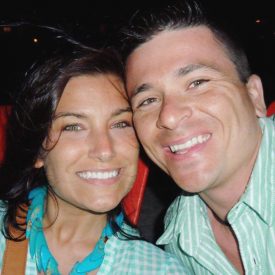I really liked my hospital and nurses during my labor and delivery. It’s a smaller hospital 5 minutes from my house with great one-on-one care and a brand spankin’ new birthing center. It was overall a great experience (aside from some complications our son had during delivery). BUT 6 months later I realize the one thing every new parent should know that no one tells you about and it really irritates me. Flat Head Syndrome. After talking to other moms it turns out no hospitals talk about it and I really don’t understand why. Torticollis and Plagiocephaly are incredibly common now with the Back is Best sleeping standard so why not help parents avoid the issue as much as possible?! I’m going to share our experience with flat head syndrome and tell you how to prevent flat head syndrome and dealing with torticollis and plagiocephaly.
How to Prevent Flat Head Syndrome: Dealing with Torticollis and Plagiocephaly

How to Prevent Your Baby From Getting a Flat Head
Let me start by saying, I am not a doctor. I am here to talk to you about our experiences and to help prevent flat head syndrome via non-medical means. Please talk to your pediatrician if your baby has a flat head or if you have questions. Let’s start with a little background and then I’ll get into our story, what causes it, how to prevent flat head syndrome, and how to fix it.
What is Plagiocephaly
Plagiocephaly is more commonly called flat head syndrome and that’s exactly what it is, a flat spot on the back or side of the baby’s head. This happens in almost 50% of babies today and is most often caused by our placement of the baby and their head. More on this below.
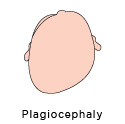
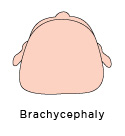
(Image source: CranialTech)
What is Torticollis
Torticollis is basically when the muscle on one side of the neck is tighter than the other side preventing full movement. This usually causes the head to tilt to one side or makes it difficult to turn the head to one side. Torticollis often occurs in babies who are cramped or in abnormal positions in the uterus or when a forceps or vacuum is used during delivery, though not all causes are known. The key point here is, Torticollis can end up causing plagiocephaly.

Slight head tilt due to Torticollis
Our Torticollis and Plagiocephaly Story
Our son had been sleeping in a pack ‘n’ play in our room since he was born. We put him down with his head nearest ours mostly so I could easily see him when I woke up at night. He never slept in a rock ‘n’ play but periodically took naps in his swing.
At our 2-month wellness appointment, we asked our pediatrician about a small flat spot on the back side of his head. She said it wasn’t terrible but it was pushing his ear forward slightly so we needed to do some things to stop it from getting worse and causing his cheek to push forward (!!!). The only way to really tell there was a flat spot and that it was pushing his ear was to look down on the top of his head. Otherwise, there was not much of an indication it was even there. She said it was often caused by sleeping habits and gave us a few little things to do before our 4-month appointment when he would be reevaluated.
Honestly, I was shocked after that appointment. I went home and did some major Googling and discovered this is a VERY common thing today. How had we never heard about this before now? Why doesn’t anyone warn you about this in the hospital? It’s almost always completely avoidable so why not educate parents early on? Had we known about it from the very beginning and how to prevent flat head syndrome we wouldn’t have been going through any of this. Well too late now so all we could do was try to stop the flattening.
Over the next 2 months, it seemed to be improving. We felt like we were doing a pretty good job. Well, at our 4-month appointment our pediatrician said it may not have gotten worse but it was still pushing his ear forward. She said any fix has to be done by 1 year old when the plates in the head fuse together. She mentioned both physical therapy and a cranial helmet as possible solutions. Helmets are usually recommended no later than 6 months to allow time to move the skull before the plates fuse together. They’re also $3000+ and not covered by insurance (partially because they are not tested enough to be proven to work and partially because they are cosmetic).
We opted for physical therapy to start and then we’d make the call on a helmet in the next 2 months depending on how PT went. I’ll still never understand how this is the one thing every new parent should know that no one tells you.
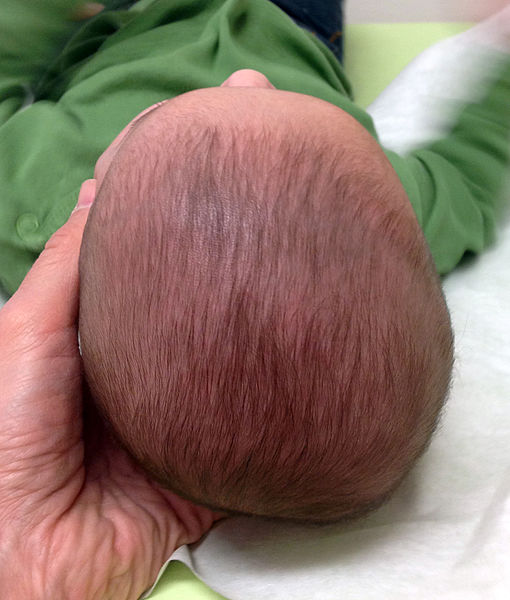
Example of a baby with Plagiocephaly
What causes flat heads in babies?
At our first PT appointment, we learned more about Torticollis and Plagiocephaly and what causes flat head syndrome. As I mentioned, Torticollis is a big contributing factor for plagiocephaly. If they baby can’t turn their head one direction it forces them to lay in the other direction most of the time.
Another cause is laying the baby in something that doesn’t allow full head rotation (rock ‘n’ play, swing, car seat) for an extended period of time.
Personal preference is also a contributing factor. We all have a go-to comfy position when we’re relaxing or sleeping, well so do babies. Pay attention to their sleeping habits early on and you might detect a few like looking one direction or lying on a specific side.
There are also less common, more severe medical problems (like plates fusing early) that can cause Plagiocephaly so it’s important to bring it up to your pediatrician if you have a concern.
In most cases, the bones in a baby’s head are still separated which allows for a lot of movement. If they lay in one spot for extended periods of time if can shift the shape of the head. This can even cause ear and facial deformities from the bones on the flattened side pushing forward. I mean, this is serious stuff, guys!
For us the main culprits were Torticollis, laying him the same direction in his pack ‘n’ play all the time, and just not knowing to watch for it. Again, the one thing every new parent should know that no one tells you. Ugh!! Let’s talk about how to prevent flat head syndrome before it starts.
How to Prevent Flat Head Syndrome in Babies
At our 2 month appointment, we discussed the basic ways on how to prevent flat head syndrome. We started by rotating him 180 degrees in his pack ‘n’ play. Apparently, babies like to look into the room more than at the wall so rotating him meant he would hopefully look the other direction and stop laying on the flat spot. If he was sleeping on his flat spot we would risk waking him to turn his head the correct direction.
For playtime, we moved all the hanging toys on his play mat to one side and made sure to lay him so he had to look the correct direction to play. We also did more tummy time (even though he hated tummy time, he started warming up to it the more we did it) to completely take the pressure off his head.
None of this worked for us because this is what you should know from birth on how to PREVENT flat head syndrome. We were already in the thick of things so we needed more from a physical therapist to treat the flat head and the Torticollis he had. I do believe had we known to watch for this we would have been able to do some stretching on our own to overcome it without PT.
How to Determine if Your Baby has Torticollis
To prevent a flat head on baby, early on, you want to determine if your baby has Torticollis. You can do this by sitting them on your lap facing out and holding them in place against your torso. Shake a rattle toy (or food, or whatever gets them to look) to one side to get them to turn their head and look in that direction. Get them to look as far to that side as they can. It should be nearly all the way (TIP – turn your head to see how far you can rotate for reference). Then, do the same on the other side. Both sides should match in rotation. Do this a few times to make sure you get an accurate picture. If one side always turns less, it’s possible they have Torticollis.
Another test is to sit them on your lap facing out in front of a large mirror. Make sure their torso is centered and vertical. Their head should be held straight and upright. It should not tilt to either side. This can be a bit harder to spot if it’s subtle but it can indicate Torticollis.
If you suspect Torticollis, it is best to mention it to your child’s pedestrian as soon as possible to prevent flat head syndrome before it starts.
How to Treat Torticollis and Plagiocephaly in Babies
Hopefully, you were able to prevent these conditions but if not, and you suspect Torticollis or notice a flat spot on your child’s head, talk to their pediatrician. Treatment for Torticollis involves determining the current level of rotation and tilt and assigning stretches and exercises to help with the neck movement and strength.
Our sons Torticollis rotation was off anywhere from 10 to 30 degrees depending on the direction. He had a moderate flat spot based on the shape and 10mm in difference from the right to left side. For reference, 3.5mm is normal, 6mm is the safe zone (no helmet needed) and 15mm+ is severe (though this is also all based on head shape and where the flat spot lies). We were prescribed a PT appointment every week for at least 8 weeks when they would determine if a helmet was needed. We also found out flat spots don’t go away until a head growth spurt that happens sometime between 4 and 8 months of age. So what we were really doing was improving mobility to stop the flat spot from getting worse while waiting for the growth spurt. Again, who knew?!

(Image Source: Technology in Motion)
For the first 4 weeks, we were given new stretches to work on and head measurements were taken. We did stretching multiple times a day for 5-10 minutes each. We also promoted tummy time as much as possible with a rolling baby and used a standing activity center to take the pressure off his head completely.
We could see the improvements in mobility and the flat spot even without her measurements which was crazy for only a 10mm initial difference. At our 4 week appointment, his mobility had greatly improved to only a 5 to 10 degree difference in mobility and his flat spot had reduced to a 7mm difference. Hallelujah! We were moving in the right direction!
We then switch to appointments every other week and by 6 months he was at 6mm and had no need for a helmet! It was amazing news for everyone! We’re currently scheduling appointments as he hits milestones to make sure the tilt in his head from Torticollis doesn’t come back. That can happen as they learn to crawl. Once he crawls they’ll measure the tilt one last time and we’ll be discharged from PT, helmet-free!!
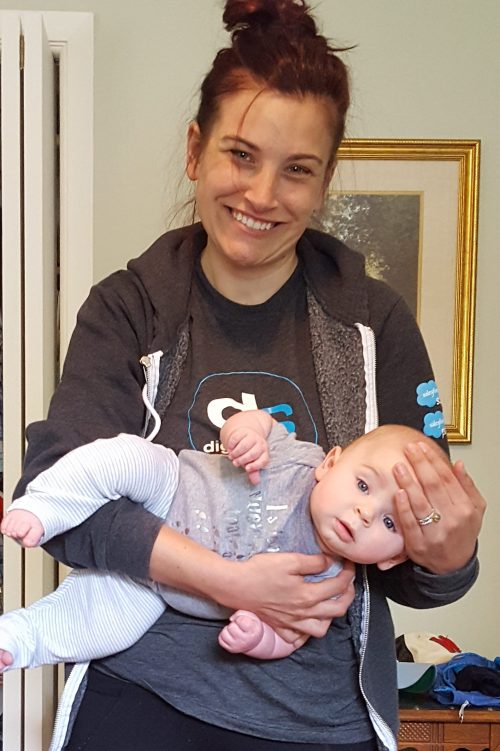
Neck stretch for Torticollis and Plagiocephaly
The One Thing Every New Parent Should Know That No One Tells You
So, now you know about Torticollis and Plagiocephaly and how to prevent flat head syndrome in babies. Pass this information on to as many parents that are trying to get pregnant, currently pregnant, or have babies as you can. Everyone should know to watch for this so we can prevent flat head syndrome before it even starts. It will save you the heartache of seeing little ones in PT or with a helmet, it will save you a lot of time spent at the doctor, and it will also save you THOUSANDS of dollars! So easy to prevent and yet it’s the one thing every new parent should know that no one tells you about!
Did you know how to prevent flat head syndrome?
Share your experiences with Torticollis and Plagiocephaly in the comments below and teach other parents how to prevent flat head syndrome.
Until next time,
XO,
Meg


